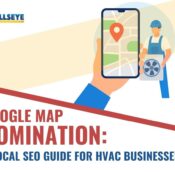
Transform Your Home Automation Website – Stunning Designs That Convert!
Transform your Home Automation Web Design with stunning visuals and seamless user experience. Optimize for SEO, mobile responsiveness, and speed to create high-converting smart home websites. Enhance user engagement and drive sales with a well-designed, functional website that converts.
Call Now For The Expert Digital Marketing Solutions: 561-277-0148
Why Home Automation Web Design Matters in 2025
In a rapidly evolving digital age, Home Automation Web Design is no longer just a matter of aesthetics – it’s a business necessity. As the smart home industry continues to boom, customers expect sleek, intuitive, and responsive websites that reflect the cutting-edge nature of the products and services offered.
Imagine landing on a cluttered, outdated site while researching smart thermostats or lighting systems. It creates immediate doubt. That’s why an optimized Home Automation Web Design not only builds credibility but also converts curious visitors into loyal customers.
From responsive design to seamless UX, staying ahead of the curve in 2025 means prioritizing your online presence.
Elements of a Powerful Smart Home Website Design
A modern Smart Home Website Design incorporates a mix of technological sophistication and user-friendly elements. These websites need to cater to tech-savvy consumers who appreciate both form and function.
Key components include:
- Hero Images and Interactive Demos: Let users explore product functionalities visually.
- Minimalist Aesthetic: White space, clean lines, and simple navigation improve user engagement.
- Clear Product Categorization: Make it easy for users to browse smart lighting, security, HVAC, and more.
Integrating live chat, instructional videos, and user-generated reviews also enhances interactivity and boosts trust.
Best UI Practices for Home Tech Sites
Achieving the Best UI for Home Tech Sites involves focusing on clarity, speed, and engagement. Visitors should immediately understand your offering and how to take the next step.
Here are a few UI best practices:
- Consistent Branding: Color schemes and font choices should align with your brand identity.
- Visual Hierarchy: Highlight important elements like call-to-action buttons.
- Microinteractions: Subtle animations enhance user feedback and make the experience enjoyable.
Well-executed UI encourages users to explore deeper into your site and builds confidence in your brand.
Optimizing Your Home Tech Website for Maximum Impact
Home Tech Website Optimization ensures that your site is not only visually appealing but also fast, secure, and user-centric. Optimization boosts performance, increases dwell time, and ultimately improves conversions.
Strategies include:
- Fast Load Times: Compress images and use content delivery networks (CDNs).
- Logical Navigation: Implement breadcrumb trails and organized menus.
- Intuitive Layouts: Use grid-based designs to avoid clutter.
An optimized site caters to both search engines and users, creating a seamless path from discovery to purchase.
Smart SEO for Home Automation Sites
A visually stunning site won’t help much if no one finds it. That’s where SEO for Home Automation Sites comes in. Smart SEO combines keyword strategy with technical enhancements to boost visibility.
Essential SEO tactics include:
- On-Page Optimization: Use keywords like “Home Automation Web Design” naturally in headings and content.
- Meta Descriptions and Title Tags: Write compelling, keyword-rich snippets.
- Technical SEO: Implement proper URL structures, schema markup, and internal linking.
Optimizing your site for search engines ensures that you appear when users are actively seeking home automation solutions.
Crafting High-Converting Smart Home Landing Pages
Smart Home Landing Pages are where the magic happens. These focused pages are designed to capture leads, promote specific products, or encourage sign-ups.
To build a landing page that converts:
- Have One Clear Goal: Don’t distract with multiple CTAs.
- Use Persuasive Copy: Highlight benefits, not just features.
- Incorporate Social Proof: Reviews, testimonials, and case studies enhance trust.
Your landing page is a virtual sales rep – give it the tools to close the deal.
How to Create High-Converting Home Tech Sites
What separates average websites from High-Converting Home Tech Sites? It’s not just great visuals; it’s how well the site guides users toward action.
Tactics for higher conversion:
- A/B Testing: Experiment with different layouts and CTAs.
- Lead Magnets: Offer eBooks or free consultations in exchange for email addresses.
- Exit-Intent Popups: Capture abandoning users with a compelling offer.
By removing friction and aligning with user intent, you significantly increase your site’s ROI.
UX Design That Powers Engagement and Retention
Exceptional Home Automation UX Design ensures that every interaction a user has with your site is seamless and satisfying. Good UX design anticipates user needs and creates frictionless paths to achieve them.
Focus areas include:
- User Flow Mapping: Create journeys for different personas.
- Mobile Usability: Buttons, text, and navigation must be thumb-friendly.
- Accessibility: Ensure compliance with ADA guidelines for inclusive design.
Happy users are more likely to return, refer friends, and complete purchases.
Making Your Smart Home Website Mobile-Ready
With over half of web traffic coming from mobile devices, having Mobile-Friendly Smart Home Sites is non-negotiable.
Key principles:
- Responsive Design: Your layout should adapt to any screen size.
- Fast Mobile Performance: Mobile users bounce quickly if pages take too long to load.
- Touch-Friendly Features: Ensure buttons and sliders work well on mobile.
A mobile-first approach guarantees that your site delivers a great experience wherever users find you.
Speed Matters: Optimizing Website Speed for Home Tech
In today’s digital race, speed kills – or more accurately, Website Speed for Home Tech sites can make or break your conversions.
Optimization tactics:
- Minify Code: Clean up HTML, CSS, and JavaScript.
- Optimize Images: Use next-gen formats like WebP.
- Reduce HTTP Requests: Simplify design to load fewer elements.
Speed isn’t just a UX factor – it impacts SEO, bounce rates, and overall satisfaction.
In today’s digital race, speed kills – or more accurately, Website Speed for Home Tech sites can make or break your conversions.
Optimization tactics:
- Minify Code: Clean up HTML, CSS, and JavaScript.
- Optimize Images: Use next-gen formats like WebP.
- Reduce HTTP Requests: Simplify design to load fewer elements.
Speed isn’t just a UX factor – it impacts SEO, bounce rates, and overall satisfaction.
Real Examples: Stunning Home Automation Sites That Convert
Let’s examine a few standout websites:
- Nest: Clean UI, smart content, and intuitive navigation.
- Ecobee: Emotional storytelling with real-world use cases.
- Control4: Dynamic visuals and high-end appeal.
These brands excel in Home Automation Web Design by aligning user needs with digital excellence.
DIY vs. Hiring a Home Automation Web Design Expert
Should you build it yourself or hire an expert? Consider:
- DIY Pros: Cost-effective and quicker for small updates.
- DIY Cons: Limited customization and longer learning curve.
- Hiring Pros: Tailored design, SEO strategy, and professional UX.
If conversions, SEO, and branding are a priority, investing in a skilled designer pays dividends.
Your Web Design Checklist for 2025
To stay ahead, ensure your website includes:
- Fast load times
- Mobile responsiveness
- Clear CTAs and landing pages
- SEO-optimized content
- Consistent branding and color scheme
- Secure payment and contact forms
Avoid common pitfalls like broken links, outdated plugins, or slow-loading media.
Final Thoughts: Turning Visitors into Customers
Your website is your digital storefront. With strategic Home Automation Web Design, you not only showcase innovation but also convert leads into customers.
The right mix of UI, UX, speed, and SEO transforms your site from a digital brochure into a growth engine. Prioritize design with intent, and you’ll stand out in an increasingly competitive market.
FAQs About Home Automation Web Design
What makes a home automation website effective?
Clear navigation, fast load times, mobile responsiveness, and a visually engaging design all contribute to an effective site.
How important is mobile responsiveness for smart home sites?
Very. Over 50% of users browse via mobile. A non-responsive site will lose potential customers quickly.
Can I improve my site speed without changing hosting?
Yes. Image compression, caching, and code minification can drastically improve speed without switching providers.
What’s the best way to design a landing page for home automation?
Focus on one CTA, use engaging visuals, add testimonials, and write benefit-focused copy.
How often should I update my smart home website design?
Ideally, review your site every 12-18 months to keep up with trends and evolving user behavior.




